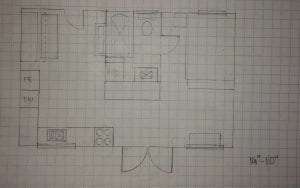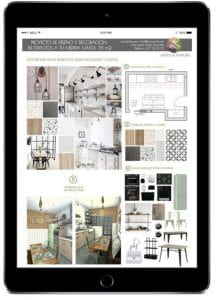How to Have a Beautiful Mind
Since my last blog post, there have been two parts of How to Have a Beautiful Mind by Edward De Bono that I Have been focusing on. The first concepts, Edward De Bono said that “Concepts are the parents of practical ideas.” Think about it this way, dinner is a concept, then the practical idea is what you end up eating whether it is salmon, fried rice, etc. Concepts can help us clarify less familiar information or facts because they give us a broader view of an idea. In my in-depth project, there have are many concepts, from working with trades, all the way to how colours work together.
Some examples of concepts in my most recent sessions with my mentor:
- Budgeting
- Spec sheets
- Paint colours
- Lighting
In the concept of budgeting, my mentor and I were talking about how I can put together a budget for my tiny home. The practical ideas behind this concept included how to organize a budget by the store we are buying it from, the room where it would be put, and the type of furniture. We also talked about getting quotes on cupboards and the installation of flooring, as well as being sure to include taxes and delivery fees. My mentor also mentioned that sometimes if you order way too much of, let us say flooring, for example. That you may need to pay a restocking fee to the flooring company to take it back, or if you did not buy enough, that you have to buy more, “That is why you measure, measure, measure.”
Over the past month or so, I have been sourcing and selecting materials for the tiny home. What I did not know before this, is that you can use a spec sheet to organize all of that information. The practical ideas behind spec sheets are including all the information about the product, name, dimensions, price, link of the product, etc. You also can organize the spec sheet by room and order the products from floor to ceiling.
We touched briefly on the concept of paint colours. We talked about the practical ideas like different colours, contrast, as well as the different types of paint.
The last major concept that we touched on was lighting. We talked about the different types of lighting, such as task, general/ambient, and pinpoint/accent lighting. Task lighting is the lighting that gives you the necessary light to do a task where you need to see. General/ambient lighting is supposed to invoke feeling. Finally, pinpoint/accent lighting is used to highlight a part of a room and draw attention to it. We also talked a bit about different lighting fixtures so I could start thinking about what type of lighting I am going to put into the design of the tiny home.
The second part of How to Have a Beautiful Mind I have been focusing on is alternatives. Alternatives give us additional information, perspectives, simplifications, and changes that can be made. De Bono wrote, “The main point is that having a way of doing something does not mean it is the best way of doing it.” I have been tasked with looking at what alternatives my mentor has offered me throughout this project and what alternatives another mentor may have offered me.
Interior design is a very creative task. Everybody does it differently and what works for me, may not work for another person. Interior design is a form of art. Thinking everybody goes through the exact same process while doing an interior design project, it is like thinking that everyone has the same way of doing art, which we all know is not true. We all have little ways we tweak different steps. My mentor may have different ways of approaching a step than I do. The processes that my mentor uses to complete one of her projects could be totally different from how another person would have tackled that task. Overall, I believe the biggest alternative that my mentor has given me and that I could have gotten from a different mentor, is the approach that each interior designer takes to a project.
Project Process and What I Still Need to Get Done
Since my last blog post, I feel I have been making good, steady progress on my in-depth project. I have met with my mentor multiple times. We have talked about the concepts mentioned above as well as making a lot of progress on the design of the tiny home. I have sourced, and selected a good portion of the furniture, appliances, etc. for the tiny home. I have also played around with a couple of space plan designs which are down below.
During my next meeting with my mentor, we are going to check up on the progress that I have made. We are going to look for any loose ends that we need to tie up and work to do that as soon as possible.
Brief Description of Learning Centre
How are you going to present your learning during these past few months?
I am currently planning to create an interactive PowerPoint to present my learning over the past few months. In the PowerPoint I am planning to include my final tiny home design as well as all the components that have led me to completing it. Such as the scope of services, the spec sheet, and my budget. I might also create a mood board, like the image below, so people can get a feel for the tiny home.
Link to mood board example: Proyecto de diseño y decoración de interiores a tu medida por Ana Utri… | Presentación de diseño de interiores, Disenos de unas, Estilos de decoración de interiores (pinterest.ca)
What aspects are you going to focus on, knowing that you cannot share everything you have learned?
In my learning centre, I want to include a very brief summary of the steps of designing a tiny home. To illustrate these steps, I can use examples of my work on each step along the way. I also really want to focus on colour and how different colours can affect the look and feel of a tiny home. Especially because I am designing such a small space, colour plays a huge role in design. Another aspect of what I have learned that I may want to share, are the major differences between designing a large house and a tiny home.
What do you hope the audience will learn from your experiences?
I hope what people take away from my experience is that you are more creative than you think you are. I have never necessarily thought of myself as an “artsy” or creative person. This project has given me a creative outlook where I get to express myself through design and I have discovered that I am a much more creative person that I give myself credit for. Since I am designing a personalized tiny home, I can design it to fit my personal wants, needs, and design preferences.
This also was a much bigger project than I originally thought it would be. At times it got tough and finding motivation to get going was hard. I got really overwhelmed at times, and I found myself making lists in my head of what I still needed to get done before I can move onto the next step. As I am getting closer to the end of this project, I feel a lot better knowing that I have gotten this far. Reminding myself of how far I have really come, is giving me the motivation I need to know that I can reach the goals I originally set for myself at the beginning of this project. So, what I hope that people take away from my experiences is to make sure you are doing something you enjoy and that you are passionate about, as well as consider how big the project you are taking on is. When the project is big, but you enjoy working on it and working with your mentor it makes it a lot easier.
What are you going to need to do to make this learning centre interactive?
To make sure that my learning centre is interactive I need to think about if I would be interested in going through my learning centre. I am going to need to keep in mind that there is no way that I can get all the information that I have learned over the past few months into my learning centre. My goals are to make my learning centre interactive and memorable rather than trying to get too much information across. A way that I can make my presentation interactive, is by using interactive sites that I used while trying to design the tiny home.


